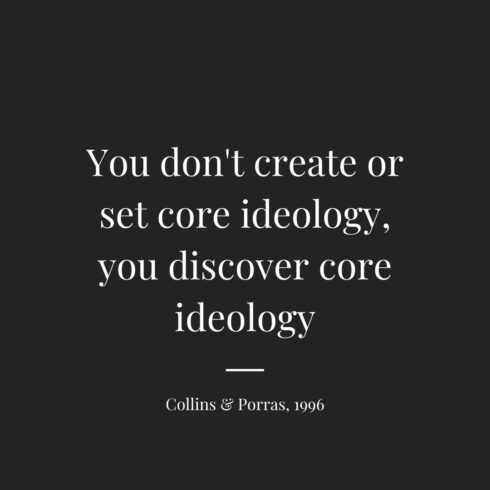The second article we highlight in our series on Competency Classics is “Building Your Company’s Vision,” by Jim Collins and Jerry Porras. This classic article, published in the Harvard Business Review in 1996, suggests that a successful organizational vision requires two essential ingredients: core ideology and an envisioned future. Together these two components define what we stand for and believe in while also painting a picture of what we aspire to become.
Building Your Company’s Vision
Authors: James C. Collins and Jerry I. Porras
Summarized by: Amen Mugisha
Great companies understand the difference between what can change and what should not. These organizations have sacred principles that stand the test of time. 
Core Ideology: Know who you are as a company; what you stand for will guide you to the vision. The vision might change over time, but who you are should serve as the foundation where all other parts stand, a compass to your direction.
- Core values: choose less than five primary values that will stand the test of time. Consider this while choosing the values; what are your personal values? What values can you keep when you have nothing or have everything? Can you keep this value even when it acts as a disadvantage? Can you take these values in any industry or organization?
- Core purpose: Purpose should not be confused by goals or making money. A purpose is like “a guiding star” pursued every day but will not be reached. The purpose should not be guided by what the organization produces or serves, but rather answers the question of why? While looking for a purpose, ask yourself the “Random Corporate Serial Killer “ game; what if someone was to buy your organization at a more than fair price, keep your employees without any guarantee of the same jobs, but plans to destroy the brand and the company’s existence. Would you accept the offer? Why would you and why would you not?
Discovering Core Ideology: Core ideology has to be authentic, clear, and accompanied by passion. What you say you are should be reflected in what you practice every day. However, aligning people with the ideology does not happen just because you talk about it; the people have to have the same ideology and values beforehand.
Envisioned Future: Have a BHAG (a Big Hairy Audacious Goal) that may take 10 to 30 years to be achieved. The goal should be accompanied by passion and enthusiasm to the extent that it inspires others to visualize the ideas. To envision the organization’s future, ask yourself what you want to achieve and see in 20 years. Are you excited about the goal? Be careful of the “we’ve arrived syndrome” when you reach a goal; create other goals and mountains to climb.
Article Source: Collins, J. C., & Porras, J. I. (1996). Building your company’s vision. Harvard Business Review, 74(5), 65-77.

